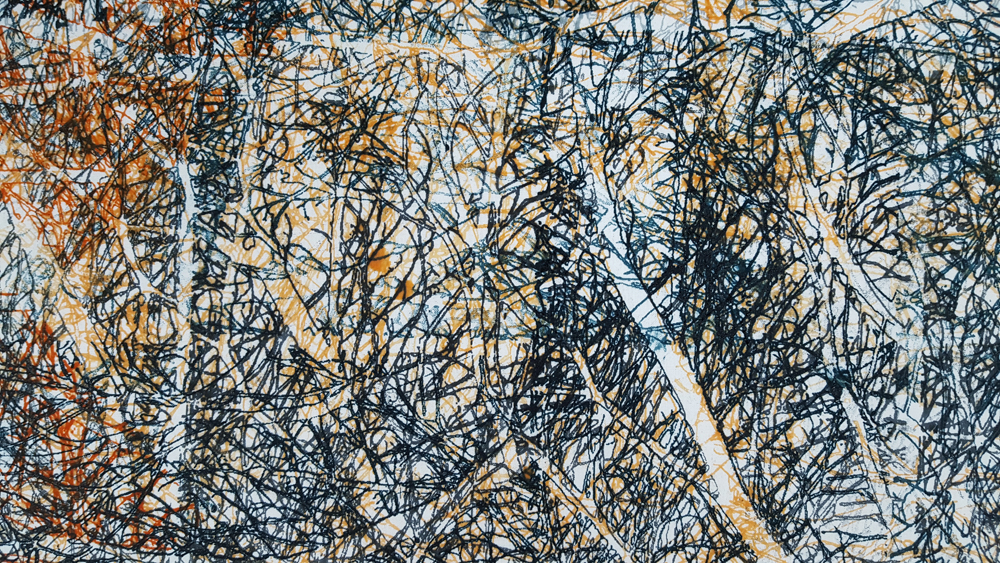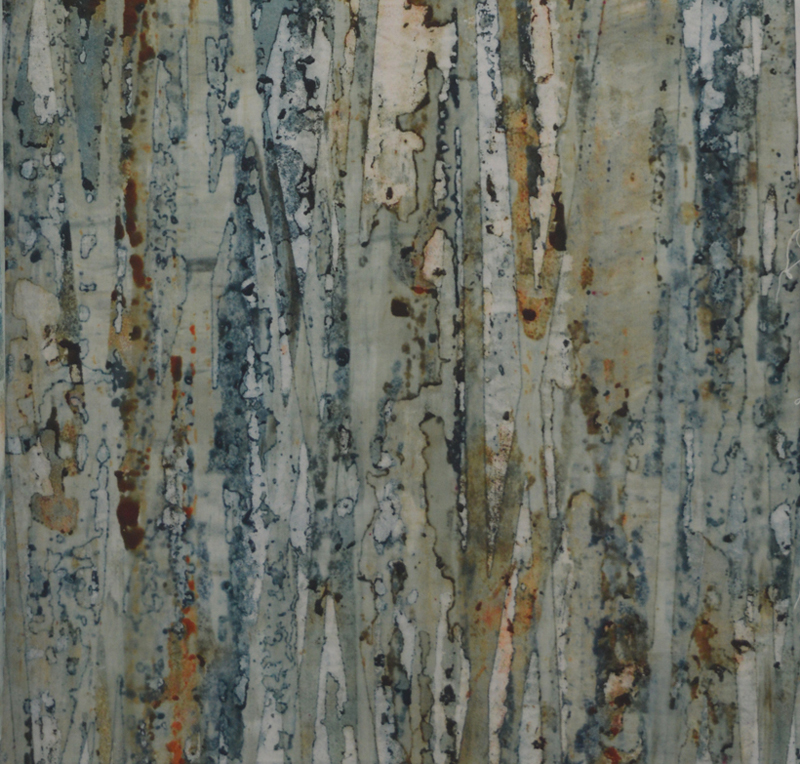Phew, with one day to spare I am already for the Knitting and Stitching Show at Harrogate. The show is open Thursday 22nd to Sunday 25th November and I’m going to be on stand TG626. Please stop by and say hello!
There are lots of things to do to get ready for the show. I am there to promote my workshops so I’ve spent lots of time in front of the computer getting new courses ready and online. I put the last two up this morning. Print Your Palette (21st to 25th October 2019) is a 5 day deep dive into screen printing that is suitable for beginners but also a great opportunity of those who have done some screen printing in the past but want support to refine their knowledge and to learn how to put fabric through multiple layers of printing.
The other course is a response to all those who need a little encouragement to actually use their printed and dyed fabric. Yes it is lovely to get our fabrics out of the cupboard to stroke them every so often but it is even better to see them hanging on a wall or laid over a bed! The workshop is called Print, Stitch, Go! (25th to 29th November 2010) and in it students will spend the first half of the week printing and dyeing a small set of fabrics which they will then use to design and sew a simple wall hanging or quilt. Suitable for people who have never printed or dyed before the workshop is designed as a fun, gentle 5 days of time away from the world.
And in between all that computer work I have been dyeing fabric to sell at the show. This is an important part of the preparation as it, hopefully, provides a good contribution towards the cost of doing the show. And it’s so much fun! I’ve aimed for a good selection of colours, lots of ice dyed pieces and layer dyed pieces, and have enjoyed bundling together sets of fat quarters. Looking at the boxes of fabric there does seem to be quite a lot of teals and blues but also some really nice golden rusty brown pieces. Which happen to be my favourite colours - strange that!
Hope to see lots of you there!












